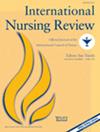Associations between nurse-to-patient ratio, nurse educational level, and nurse-sensitive patient outcomes: A 12-month prospective observational study
Abstract
Aim
To investigate the associations between nurse staffing levels, nurse educational level, and nurse-sensitive patient outcomes among patients in medical and surgical wards.
Background
Patient outcomes are affected by a variety of factors, including nurse staffing and registered nurse (RN) educational levels. An examination of the associations between these factors and patient outcomes will help identify the impact that nurses make on patient care, including health and safety.
Methods
A 12-month prospective observational study was conducted in four major hospitals in Hong Kong. Data on nurse staffing were collected daily, while data on nurse-sensitive patient outcomes were retrieved from patient records and nursing documentation. Multiple regression was used to examine the association between each of the outcomes and the explanatory variables including nurse-to-patient ratio and educational qualifications at the ward level. The STROBE guidelines were followed in this study.
Results
The average monthly nurse-to-patient ratio per ward was 1:9.2 (1:7.4 for day (morning and afternoon) and 1:19.1 for night shifts). The percentage of RNs with a bachelor's or higher degree was 83.6%. A higher nurse-to-patient ratio was significantly associated with a larger number of patients with physical restraints and catheter-associated urinary tract infections. A significant association was also found between a higher percentage of RNs with a bachelor's or higher degree and a smaller number of physical restraints used.
Conclusions
Nurse staffing and educational levels were associated with key patient outcomes such as physical restraint use and incidence of catheter-associated urinary tract infections.
Implications for nursing and health policy
Current nurse staffing strategies should be refined in light of these findings in order to enhance patient health and safety outcomes.

 求助内容:
求助内容: 应助结果提醒方式:
应助结果提醒方式:


